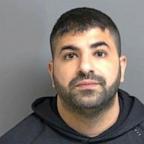Fire Expert: How I Nearly an Sent an Innocent Man to the Electric Chair
John Lentini explains what changed his view of arson investigation forever.
May 6, 2010— -- John Lentini, one of the nation's leading arson experts, had a life-changing experience in arson fire investigations. Twenty years ago, he was convinced that a man named Gerald Lewis had killed his pregnant wife and four children by setting fire to their home in Jacksonville, Florida. Before he testified for the prosecution, Lentini had a chance to test Lewis' claim that the blaze began by accident when his couch caught on fire. It changed his view of arson investigations forever. Here is his own description of what happened:
When I was first contacted by Duvall County, Florida prosecutors, it was with a request to review the chemical analysis of fire debris in a multiple fatality fire. The state's chemist said he had detected gasoline in some critical fire debris samples. When I reviewed the data, however, I did not see the gasoline, so I sent it to 10 colleagues, who also disagreed with the gasoline determination.
Watch the "20/20" investigation into arson fires Friday at 10 p.m. ET
I was next asked to review the fire scene inspection report prepared by a fire investigator in the Jacksonville Fire Department. I thought his report looked pretty reasonable. I thought that he had developed a sustainable determination that the fire was intentionally set using flammable liquids. Because of the lack of a credible laboratory report, however, the prosecution team decided it needed something more.
The "something more" was a test fire conducted in a house two doors down with the same floor plan, which we outfitted with the same furnishings as the house where the people died. The two scientists (myself and another well-known fire scientist) leading the experiment both believed that flashover, a transition point at which heat causes almost everything in a room to catch fire, might be achieved in 15 or 20 minutes. Instead, it took just over four minutes. This added much credibility to the defendant's version of events.
I had been scheduled to sit down with the defendant's lawyer the next day for a deposition (Florida is one of the few states where all witnesses in criminal proceedings can be questioned under oath before trial). But I told the prosecutors, who had witnessed the test fire, that based on the test results, I was no longer able to state that I thought the fire was intentionally set. I had come within 24 hours of giving testimony that could well have sent an innocent person to Florida's electric chair. Needless to say, I was chastened by the experience. My professional life was never the same again.
Although the prosecutors were relieved to have avoided bringing a questionable case to trial, I was derided and demeaned by many fire investigators who would have gone forward with the case even with the test results we had, based on their visual observation of the "pour patterns" on the floor.




